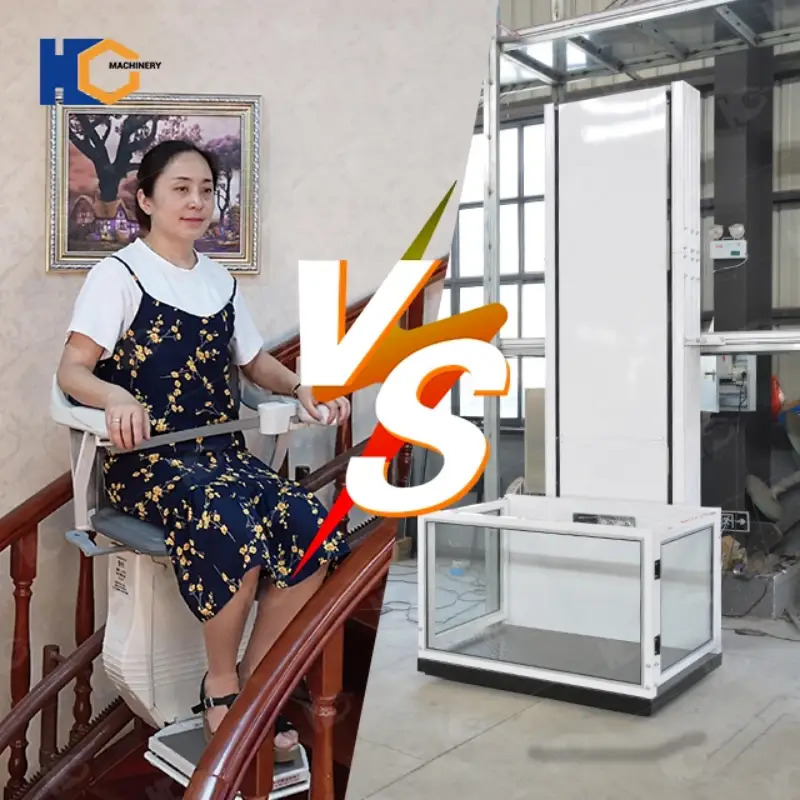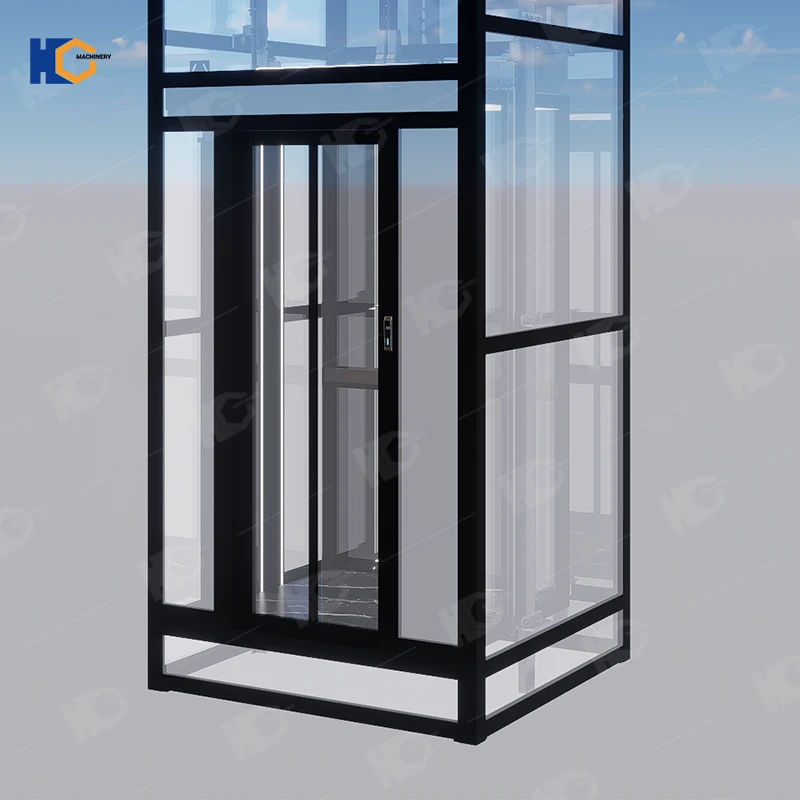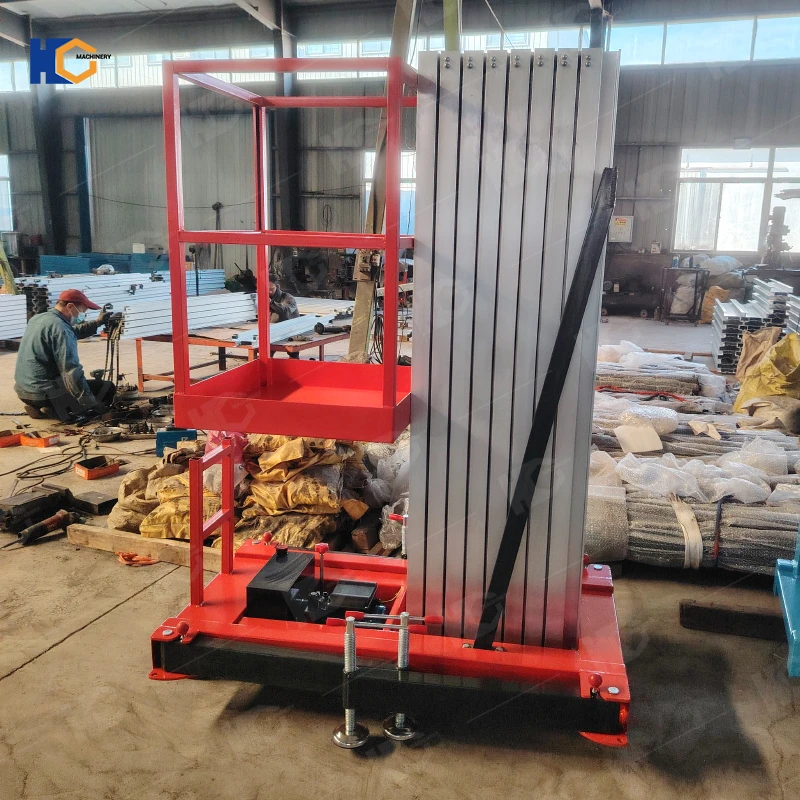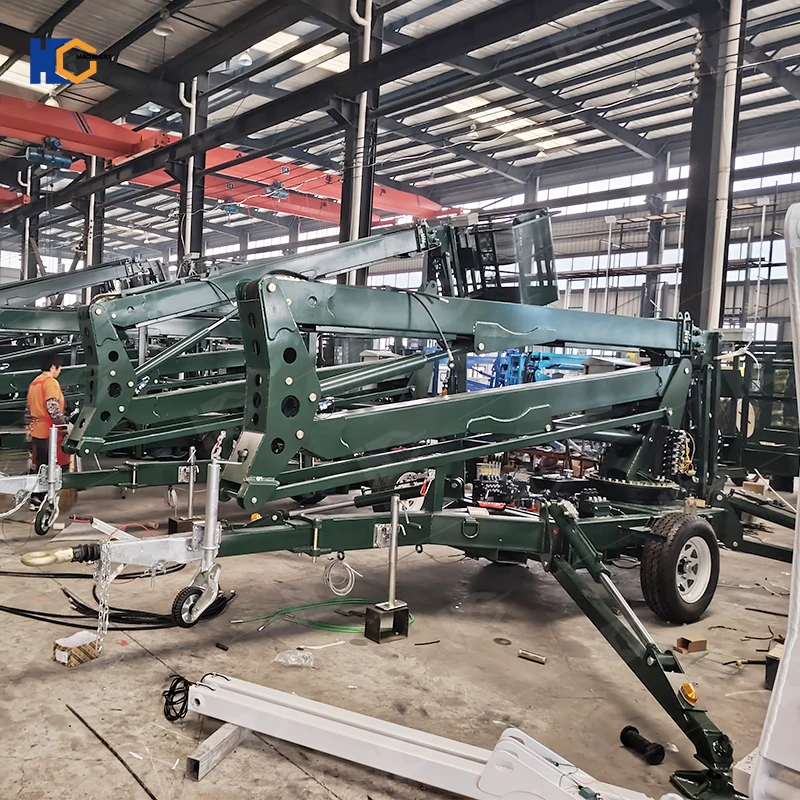Accessibility lifts have become essential in many homes to ensure safe and convenient movement for individuals with mobility challenges. These lifts provide a practical solution for overcoming architectural barriers such as stairs or uneven floors, enhancing independence and quality of life. Among the various types of residential lifts available, vertical platform lifts and inclined lifts are two of the most popular options. Each type serves a unique purpose and offers distinct advantages depending on the specific needs of the user and the layout of the home.
Choosing the right type of lift is crucial because it affects not only the ease of use but also the safety, installation process, space requirements, and overall cost. An improperly chosen lift can lead to frustration, inefficiency, or even pose safety risks, which is why understanding the differences between vertical platform lifts and inclined lifts is important before making a decision.
The purpose of this article is to provide a clear comparison between vertical platform lifts and inclined lifts, helping homeowners, caregivers, and accessibility professionals make informed choices. We will explore how each lift operates, the advantages and limitations of both, and key factors to consider when selecting a lift that best fits your home environment and mobility needs. By the end, you will have a better understanding of which lift type may be best suited for your home to improve accessibility and comfort.
What Are Vertical Platform Lifts?
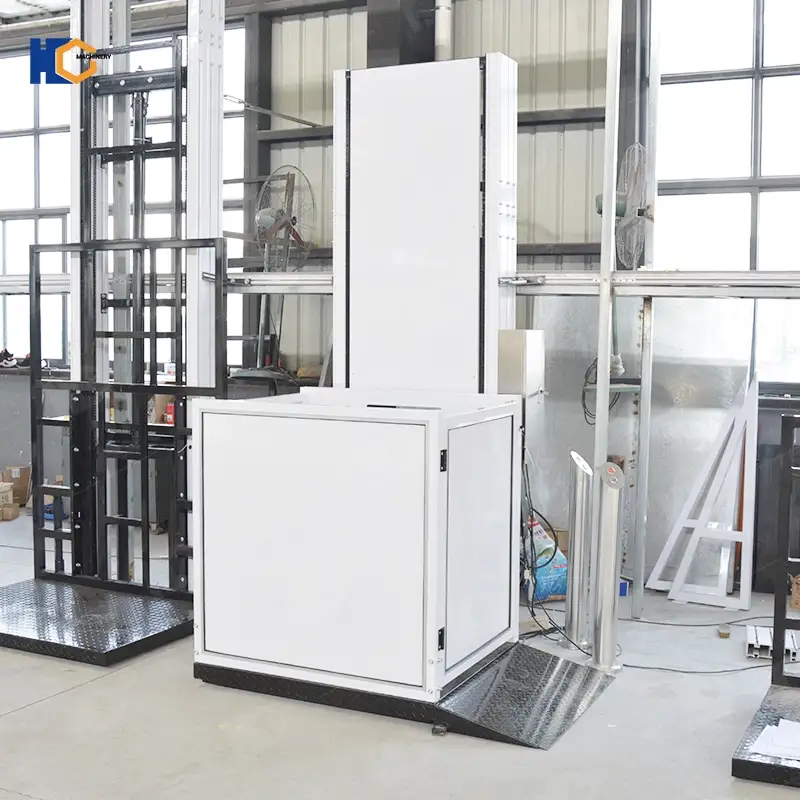
Vertical platform lifts (VPLs) are mechanical devices designed to transport individuals and their mobility aids, such as wheelchairs, vertically between different levels of a home or building. Unlike traditional elevators that often require extensive space and structural modifications, vertical platform lifts provide a more compact and cost-effective solution for overcoming height differences, such as stairs, porches, or small raised platforms.
The basic functionality of a vertical platform lift involves a flat platform that moves straight up and down along a vertical track or within a shaft. Users roll onto the platform and operate the lift using simple controls, allowing smooth and safe vertical travel. Because they move vertically rather than along an incline, these lifts can be installed indoors or outdoors, depending on the model and environmental conditions.
In residential settings, vertical platform lifts are commonly used to improve accessibility to areas such as front porches, backyard decks, sunrooms, or split-level floors. They are particularly beneficial for homeowners who use wheelchairs or walkers and require an easy way to navigate changes in elevation without relying on stairs. Additionally, VPLs can be an excellent option for homes where space is limited and installing a traditional elevator or stairlift is not feasible.
Key features of vertical platform lifts include their vertical movement, which allows them to fit into relatively small footprints compared to elevators. They typically require a sturdy, level surface for installation and enough headroom clearance to ensure safe operation. Many models come with safety features such as guardrails, emergency stop buttons, and smooth start-stop mechanisms to provide a secure ride. Moreover, vertical platform lifts often have weather-resistant designs, making them suitable for outdoor use in various climates.
Overall, vertical platform lifts offer an accessible, safe, and space-efficient way to move vertically within a home, providing increased independence and ease of mobility for residents with limited physical abilities.
What Are Inclined Lifts?
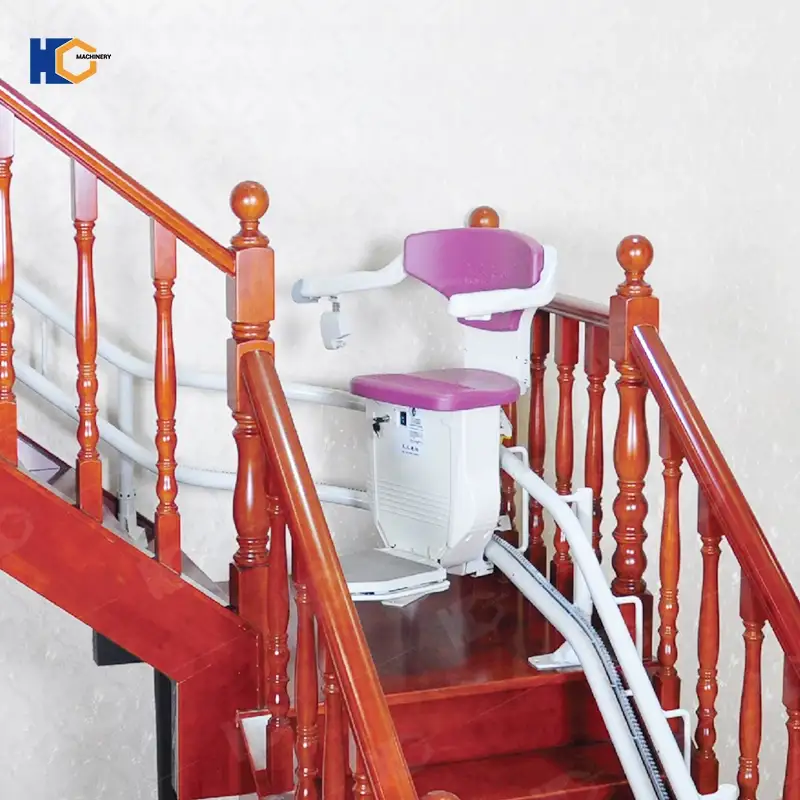
Inclined lifts, also known as stairlifts, are mobility devices designed to transport individuals along the incline of a staircase. Unlike vertical platform lifts, which move straight up and down, inclined lifts follow the angle of the stairs, allowing users to travel safely and comfortably between floors without the need to walk up or down steps.
The basic functionality of an inclined lift involves a motorized chair or platform attached to a rail system that is securely mounted along the staircase. The user sits or stands on the lift, which then glides smoothly up or down the stairs at the push of a button or using a remote control. This makes inclined lifts an ideal solution for homes with existing staircases where space or budget constraints make the installation of an elevator impractical.
In residential settings, inclined lifts are widely used to improve accessibility between multiple floors. They are especially popular for individuals who have difficulty climbing stairs due to age, injury, or disability but do not necessarily require a wheelchair platform. Inclined lifts can be installed on straight or curved staircases, though curved models typically require custom rail fabrication and cost more. They are commonly found in private homes, assisted living facilities, and even some small commercial spaces.
Key features of inclined lifts include their ability to conform to the shape and length of the stairs, which allows them to be installed in homes with limited space or unusual staircase designs. Installation is usually less invasive compared to elevators, as they attach directly to the stair treads without significant structural modifications. Many inclined lifts also come with safety features such as seat belts, swivel seats for easy entry and exit, and obstruction sensors that stop the lift if something blocks its path.
Inclined lifts offer a convenient, affordable, and relatively simple way to enhance stair accessibility in homes, helping users maintain independence and safely navigate between different levels.
Comparing Vertical Platform Lifts and Inclined Lifts
When deciding between vertical platform lifts and inclined lifts for your home, several important factors come into play, including space and installation requirements, cost, safety, maintenance, accessibility, and aesthetics. Understanding these differences will help you choose the lift that best fits your needs and home environment.
Space and Installation Considerations
Vertical platform lifts require a relatively small but dedicated vertical shaft or open space where the lift can move straight up and down. They often need a level surface at both the top and bottom of the lift for safe entry and exit. Installation can be either indoors or outdoors, with some models designed to withstand weather conditions. Inclined lifts, on the other hand, are installed along the staircase railing and follow the stairs’ incline. Because they attach directly to the stairs, they require less overall space and avoid the need for a vertical shaft. However, curved or irregular staircases may require custom rails, making installation more complex. For homes with narrow or winding staircases, inclined lifts might be the more practical option.
Cost Differences
Generally, vertical platform lifts tend to be more expensive than inclined lifts due to their larger mechanical complexity and often higher installation costs. Vertical lifts may require additional structural modifications, especially indoors. Inclined lifts usually have a lower upfront cost and are simpler to install, especially on straight staircases. However, custom curved stairlifts can increase in price significantly.
Safety and Reliability
Both types of lifts are designed with safety in mind. Vertical platform lifts include guardrails, safety gates, emergency stop buttons, and smooth start-stop controls to protect users. Inclined lifts also come with seat belts, obstruction sensors, and swivel seats to ensure safe boarding and exiting. In terms of reliability, both lifts are durable, but vertical platform lifts, especially outdoor models, often require weatherproofing and regular checks to maintain performance.
Maintenance Requirements
Maintenance for vertical platform lifts typically involves periodic inspections of mechanical parts, safety devices, and electrical systems. Outdoor units may need more frequent upkeep to prevent weather-related wear. Inclined lifts require regular cleaning of the rail system, battery checks (if battery-powered), and occasional servicing of the motor and safety sensors. Maintenance for both types is generally straightforward but depends on the frequency of use and environmental factors.
Accessibility and Ease of Use
Vertical platform lifts are ideal for wheelchair users and those who need a flat, stable platform for transfers. They provide a smooth, level ride and accommodate mobility devices easily. Inclined lifts are often preferred by those who can transfer onto a seat or stand during travel and want a quicker, less bulky option for stair navigation. User-friendly controls on both types make operation simple, but vertical platform lifts may require slightly more space to maneuver onto the platform.
Aesthetic and Design Impact on the Home
Inclined lifts tend to blend more seamlessly into the home environment since they follow the stairs and can often be folded up when not in use. Vertical platform lifts are more noticeable due to their size and vertical movement, which may impact the home’s interior or exterior design. However, modern vertical lifts come in various styles and finishes to complement home aesthetics.
Factors to Consider When Choosing a Lift for Your Home
Selecting the right lift for your home is a critical decision that impacts daily comfort, safety, and mobility. Several important factors should guide your choice to ensure the lift meets your specific needs and fits well within your living space.
Staircase Design and Space Availability
The design and layout of your staircase play a major role in determining which type of lift is suitable. For homes with straight staircases, inclined lifts (stairlifts) are often easier and less expensive to install. However, if your stairs are curved, narrow, or irregularly shaped, custom inclined lifts are available but can be more costly. Vertical platform lifts require a dedicated vertical space for installation, so if you have limited room or no clear vertical shaft, they may not be feasible. Additionally, vertical lifts are suitable for outdoor use where stairs lead to porches or decks, making them a flexible option for many home layouts.
User Mobility and Specific Needs
The mobility level and requirements of the user are essential in choosing the right lift. If the user relies on a wheelchair or needs a flat platform to transfer safely, a vertical platform lift is often the best choice. It offers ample space and a level surface for easy boarding and exiting. Conversely, if the user can transfer to a seat and is comfortable sitting during transit, an inclined lift might be more appropriate. It provides a smooth ride and is less bulky, allowing for quick movement up and down stairs.
Budget Constraints
Cost is a significant factor in any home modification project. Vertical platform lifts generally have a higher upfront cost due to their size, installation complexity, and mechanical components. Inclined lifts typically offer a more affordable solution, especially on straight staircases. However, customization for curved stairs or additional features can increase the price. It’s important to consider both initial costs and potential ongoing expenses such as maintenance and repairs.
Local Building Codes and Regulations
Compliance with local building codes and regulations is crucial when installing any type of lift. Some areas have specific requirements for safety features, installation permits, and accessibility standards. Before purchasing a lift, consult with local authorities or a professional installer to ensure your chosen lift meets all legal and safety guidelines.
Long-Term Maintenance and Service Support
A lift is a long-term investment, and regular maintenance is necessary to keep it operating safely and efficiently. When choosing between vertical platform lifts and inclined lifts, consider the availability of local service providers, warranty coverage, and the ease of obtaining replacement parts. Some manufacturers offer comprehensive maintenance plans that can provide peace of mind and protect your investment over time.
By carefully evaluating these factors, you can select the most suitable lift to enhance your home’s accessibility and support your mobility needs effectively.
Pros and Cons Summary
Vertical Platform Lifts
Advantages:
Provide a stable, flat platform ideal for wheelchair users and those needing extra space.
Move vertically, allowing installation in both indoor and outdoor settings.
Require relatively small floor space compared to traditional elevators.
Equipped with strong safety features like guardrails and emergency stops.
Durable and suitable for heavy-duty use, including weather-resistant options for outdoors.
Disadvantages:
Generally more expensive than inclined lifts due to complex installation and equipment.
Require sufficient vertical clearance and a dedicated installation space.
Can be visually prominent and impact home aesthetics more noticeably.
Outdoor models may need frequent maintenance due to exposure to weather.
Inclined Lifts
Advantages:
More affordable and simpler to install, especially on straight staircases.
Follow the natural incline of stairs, making efficient use of space.
Foldable designs reduce obstruction when not in use.
Ideal for users who can transfer to a seat and want a quick, convenient solution.
Suitable for both indoor and some outdoor staircases.
Disadvantages:
Not suitable for wheelchair users unless paired with a platform attachment.
Curved staircases require custom rails, increasing cost and installation time.
Less spacious than vertical lifts, limiting use for larger mobility devices.
May require more frequent maintenance of moving parts along the rail.
Conclusion
Choosing between vertical platform lifts and inclined lifts depends largely on your home’s layout, your mobility needs, and budget. Vertical platform lifts offer a spacious, stable platform ideal for wheelchair users and can be installed indoors or outdoors, but they require more space and higher investment. Inclined lifts provide a more affordable, space-efficient solution that follows the staircase, making them great for users who can transfer to a seat, though they may not accommodate all mobility devices.
When deciding which lift is best for your home, carefully consider factors such as staircase design, user requirements, installation constraints, and long-term maintenance. Your personal needs and living environment will guide the right choice.
To ensure safety, comfort, and the best value, it’s always recommended to consult with experienced accessibility professionals. They can assess your home, discuss options, and help you select the ideal lift to enhance your mobility and independence.
JNHC LIFT specializes in the production and sales of high-quality vertical platform lifts designed to enhance accessibility and convenience in residential and commercial spaces. Our vertical platform lifts offer smooth, reliable vertical movement, perfect for wheelchair users and individuals with mobility challenges. We provide customized solutions tailored to your specific space and needs, ensuring safety, durability, and ease of use. Whether you need a lift for indoor or outdoor installation, JNHC LIFT delivers professional design, manufacturing, and after-sales support to guarantee customer satisfaction. If you are looking for a trusted partner to improve accessibility in your home or business, welcome to consult with JNHC LIFT for personalized service and expert advice. Contact us today to discuss your custom vertical platform lift requirements!
